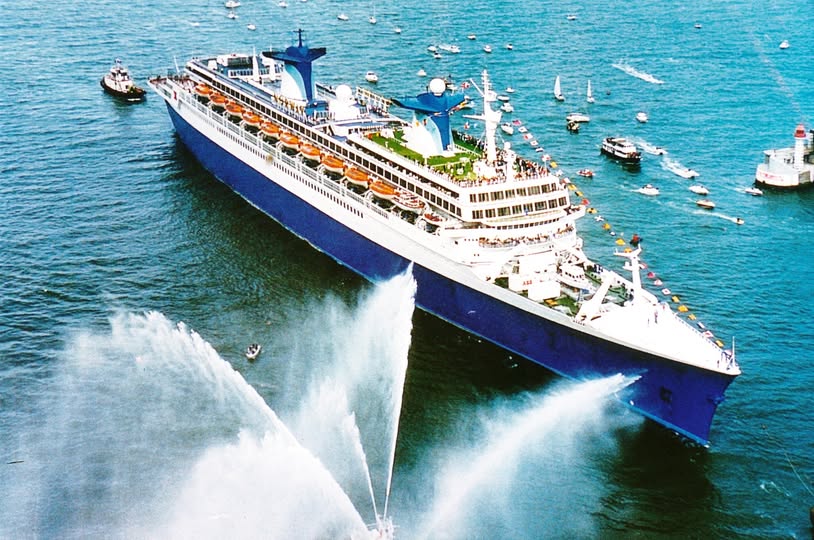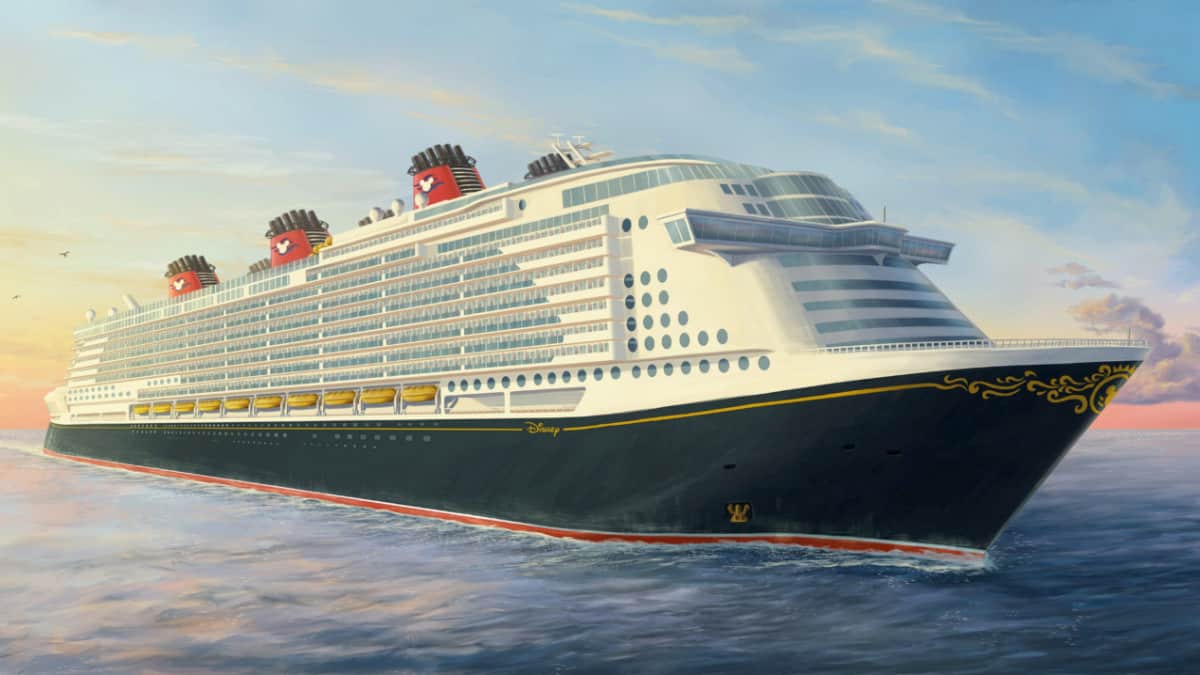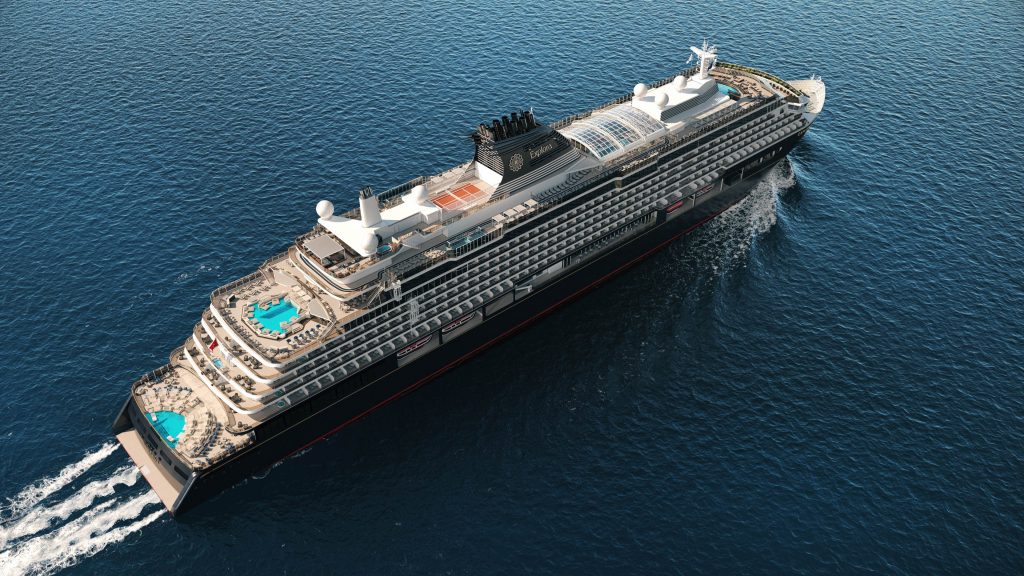Architect Njål Eide introduced soaring atria, elegant curves and impressive multi-level dining rooms to cruise ships
Njål Eide, one of the world’s foremost cruise ship designers, introduced several revolutionary design concepts workng for multiple cruise lines, like the now ever present atrium. He worked as a chief designer for Royal Caribbean International and also designed vessels for Holland America, Princess, Celebrity and Disney Cruise Line.
As a boy, Njal Eide would watch the old transatlantic liners set sail from his native Norway sailing to the USA. When the airplane made ocean liners more and more obsolete, they were replaced by cruise ships from the mid-1960s. Eide was to gain international praise for his original designs.
It all started when Eide was part of the Scandinavian design-team for Norwegian America Line’s Sagafjord in 1965 and Vistafjord in 1973. The first vessel where Eide had a leading role was in 1982 with RCI’s’s Song of America. He (partly) designed all of Royal Caribbean’s early ships. His designs culminated in Sovereign of the Seas, at the time the world’s largest cruise ship with her impressive atrium The Centrum, in1988. Eide called the interconnecting stairs “parade staircases”. At the time, Soverereign of the Seas was a true marvel, being RCI’s answer to Norwegian Caribbean Cruise Lines’ Norway and the first purpose built mega cruise ship.
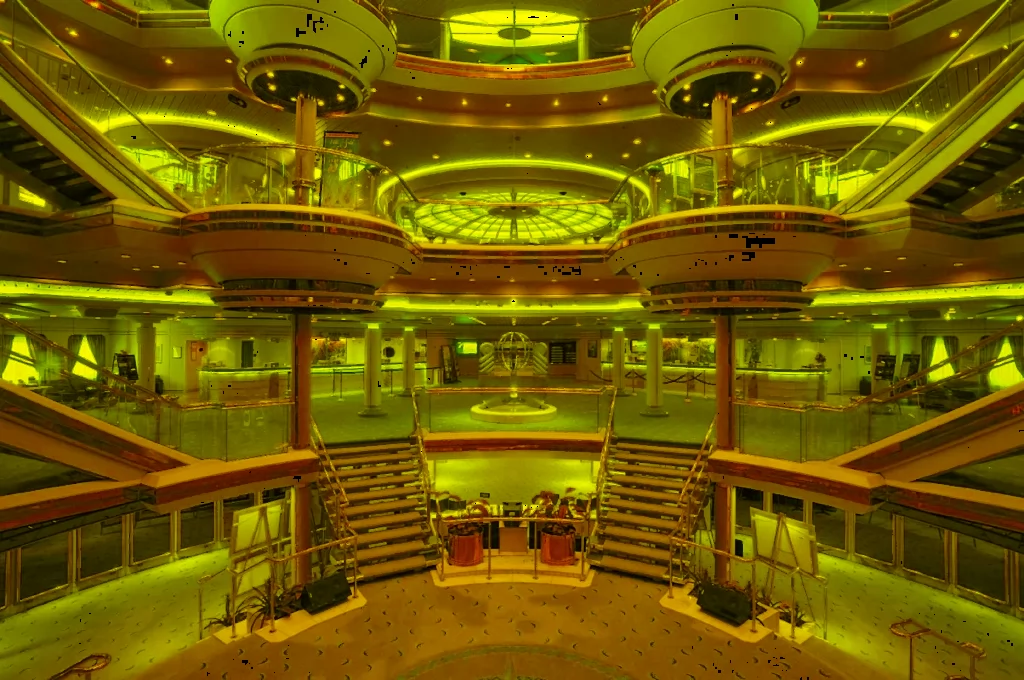
So Eide became known for being the architect who introduced the atrium in cruise ships, earning him the nickname Atrium Man. Up till then, the inspiration for liner interiors had already come from a diversity of examples, like buildings old and new, but according to Eide, now ship owners wanted him to design ships specifically resembling hotels and resorts. However, he also took inspiration from the airline industry and from large public buildings such as stadiums.
And although liners already did have impressive interiors, following the standard liner interior lay out, this would lead to ships with long, endless corridors, alternating with lounges and bars. There would be no focal point on the ship, a centre where people could meet like a town square (which goes back as far as anicient Roman town planning – the forum).
Looking at modern hotels made Eide come up with the multilevel atrium, which not only broke up the long interior of the ship, but with the use of acres of glass and artificial lighting became the ship’s focal point. The first atrium appeared on the Regal Princess (1991) and was three storeys high. It developed into the five-storey atrium, called The Centrum, onboard Royal Caribbean’s Sovereign of the Seas. Sisterships Majesty of the Seas (1991) and Monarch of the Seas (1992) followed suit.
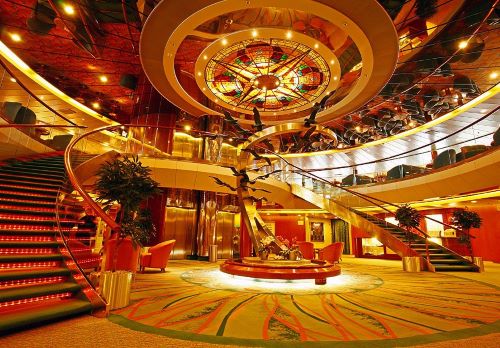
In the early 1980’s, Eide became the leading architect for the Royal Caribbean organisation, introducing a completely new style of cruise ship inside and out. For Royal Caribbean alone he designed over 20 ships.
When Royal Caribbean’s Radiance of the Seas (2001) was delivered she featured the highest known atrium, with a bar at the top.
Richard Fain, Royal Caribbean International’s CEO once mentioned:” he loved curves, but it’s expensive to build curves. In fact, I once sent him a ruler, with a note that read, “This device can create straight lines, and occasionally they can be quite pleasing.”‘ Indeed, Eide often worked with circles and 45-degree angles in his design resulting in a second nickname, “Circle Man”.
Eide also became known for the dining room of the 1990’s Nordic Empress (today The Empress for the Indian cruise line Cordelia Cruises) , It was placed at the stern of the ship and featured a horse-shoe-shaped curved balcony. In his book ‘Crossing & Cruising,’ the late maritime historian and author John Maxtone-Graham called it “a veritable Hollywood dining room”. According to Maxtone-Graham “what movie designers produce in fantasy, RCCL has captured in glittering reality, this is cruising’s aesthetic benchmark, against which all rival dining rooms must be measured from now on”.
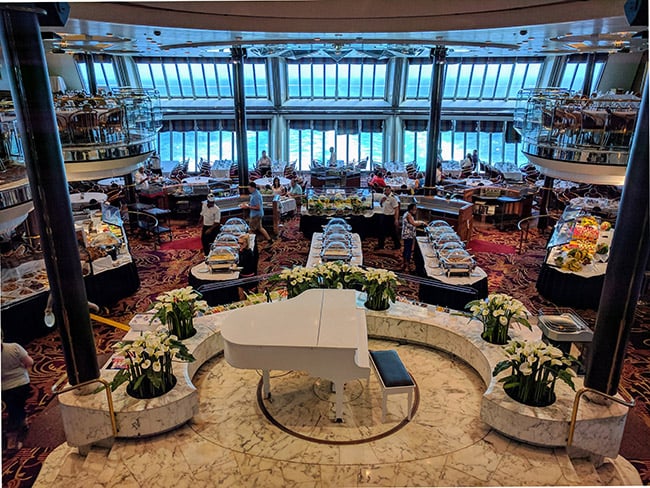
Besides Royal Princess (1984, today Phoenix Reisen’s Artania), the first large cruise ship with all outside cabins, Eide was involved in the four-ship Sun Princess class, starting with 1995’s Sun Princess. For those ships he created both external profiles and atria. He also worked on Royal Viking Line’s Royal Viking Sun (1988, now sailing as Phoenix Reisen’s Amedea after a career with Holland America as their Prinsendam).
As cruise ships grew bigger and a growing diversity of onboard activities emerged, also the need for specialist designers and architects arose. EIde designed about 60% of the interiors when he started his career, but now specialists were required for cinemas, gyms, theatres etc. His expertise now shifted to being the coordinator of the design of others.
In an interview **, he recalled a project where his design was used for the ship’s exterior. “I was invited with other companies to design a new ship for the Walt Disney Company, we all came up with proposals and had to present to Michael Eisner. He didn’t want to go with any of the designs he saw. So I went home to Oslo and made a model of something new. As a boy I used to draw the old ocean liners with two funnels. I made a drawing like that and used the colours the old liners once used: a black hull, a red bottom, which were some of the Mickey Mouse colours – and incorporated the orange of the lifeboats.” Needless to say he won the contract. DIsney wanted their ships to be different from the rest and they immediately embraced the ocean liner approach.
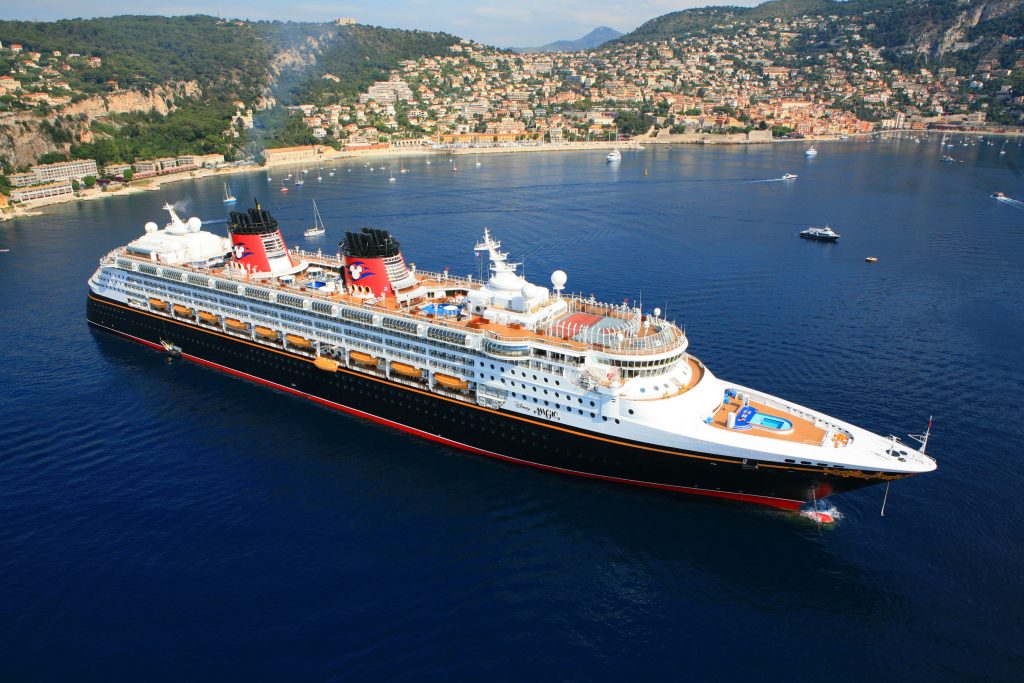
Later during his career, Eide also thought of the future design of cruise ships. One of his ideas (which was never realised) was the Floating Island, a large, barge-like structure that could float in shallow water, for which he first drafted plans in 1985. When this will be built is just a matter of when someone dares to make it a reality, according to Eide.
In 2001, Royal Caribbean published Eide’s book, “Elegance at Sea : The Art and Architecture of Royal Caribbean and Celebrity Cruises” which featured his work for the company.
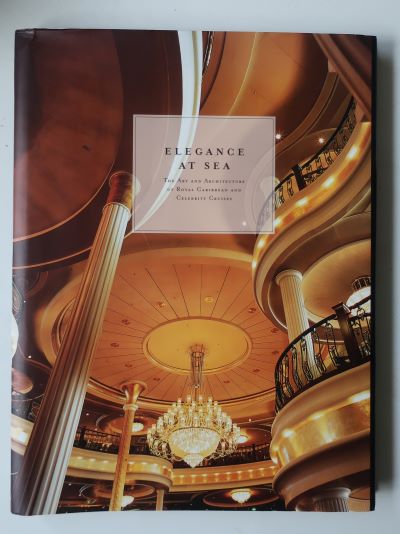
Architect Njål Eide, who introduced soaring atria, elegant curves and impressive multi-level dining rooms to cruise ships, died in December 2016 in Lysaker, Norway at the age of 85.
** Interview with World Cruise Network in 2006

